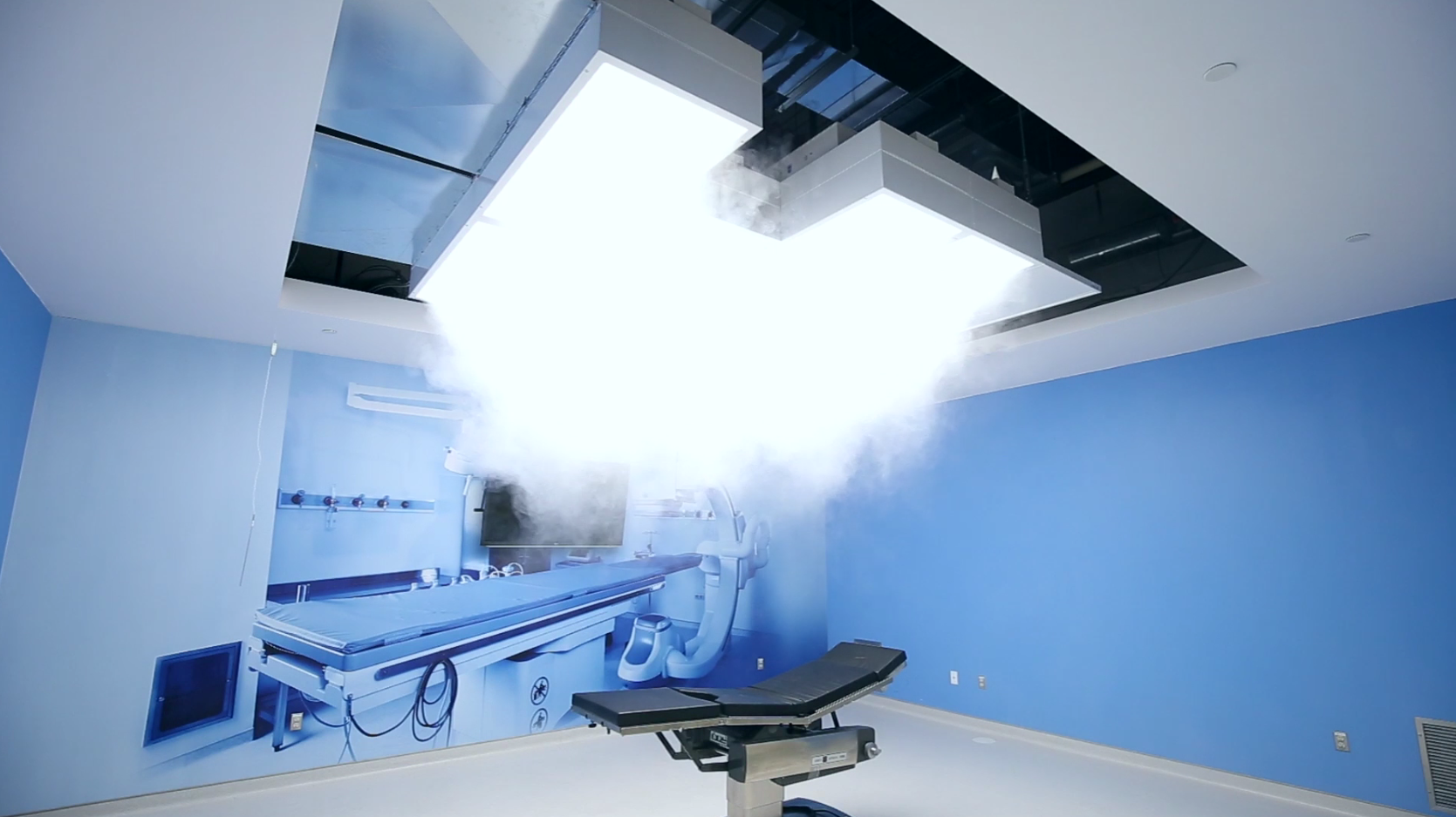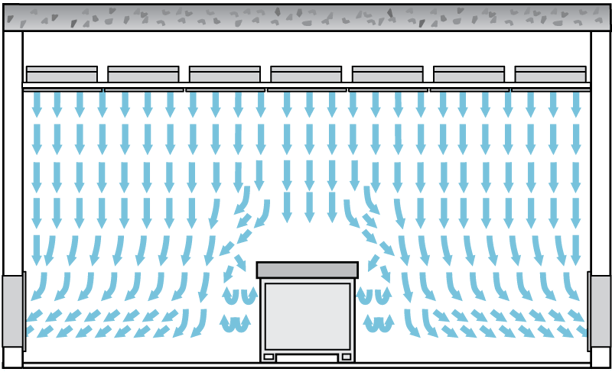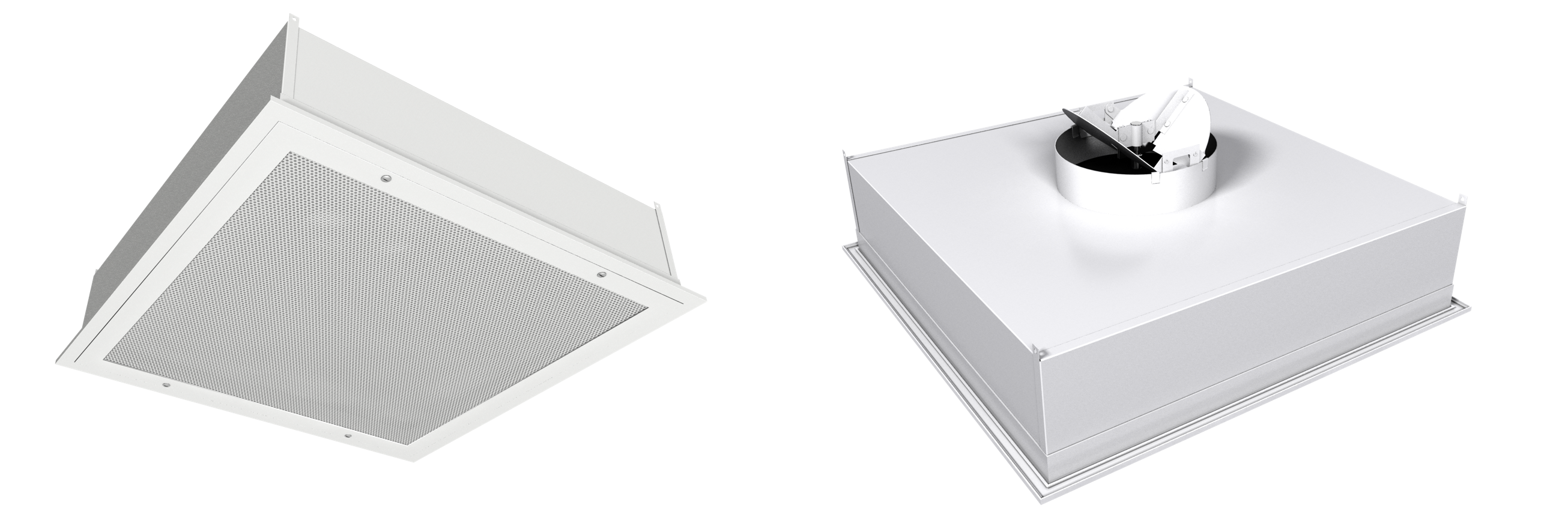Examining the Science of Laminar Flow and How It’s Used in HVAC Applications
Laminar flow is a type of fluid motion characterized by smooth parallel layers, or laminae, that can slide relative to each other with little to no mixing. This is in contrast to turbulent flows, where chaotic changes in pressure and velocity can be observed as vortices, or eddies (reverse swirling currents), and where much more mixing occurs within the fluid.
 |
| Theatrical smoke illustrates the laminar flow provided by the diffusers within Price’s Ultrasuite |
Fluid mechanics defines the flow type in terms of the Reynolds number (Re), which is a ratio of a fluid’s inertial forces to viscous forces. Laminar flows are widely defined as having a Reynolds number of less than 2,300.
Although technically the Reynolds number is often greater than 2,300 in HVAC air distribution applications (meaning the flows are turbulent rather than laminar), the core purpose of “laminar” air patterns is to mimic some of the properties that are characteristic of laminar flow.
Laminar Airflow Applications
In the context of HVAC room air distribution, the definition of laminar is more nuanced. The purpose of laminar flow is to provide clean air while displacing particulate from a zone. It is important that there is little to no entrainment of room air and particulate so that the conditioned zone is kept clean.
Some applications that require laminar flow are hospital operating rooms, protective environments, cleanrooms and laboratories. In these applications, laminar air distribution is often achieved using laminar flow diffusers. The American Society of Heating, Refrigerating and Air-Conditioning Engineers (ASHRAE) defines this type of air outlet as nonaspirating, which means it has unidirectional, downward airflow with minimum entrainment of room air.
 |
| Laminar, nonaspirating airflow has unidirectional, downward motion with minimal entrainment of room air |
Laminar Flow Diffusers
The typical construction for a laminar flow diffuser consists of a duct connection, upper plenum and one or more layers of perforated material to promote an equalized, distributed air pattern. Laminar flow diffusers may also include HEPA filters for use in applications with extremely high cleanliness requirements.
 |
| Price’s Laminar Flow Diffuser (LFD) |
For more information on laminar flow in HVAC applications, reach out to us at criticalenvironments@priceindustries.com.



